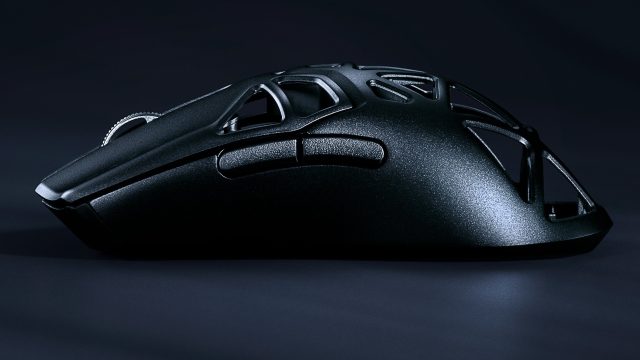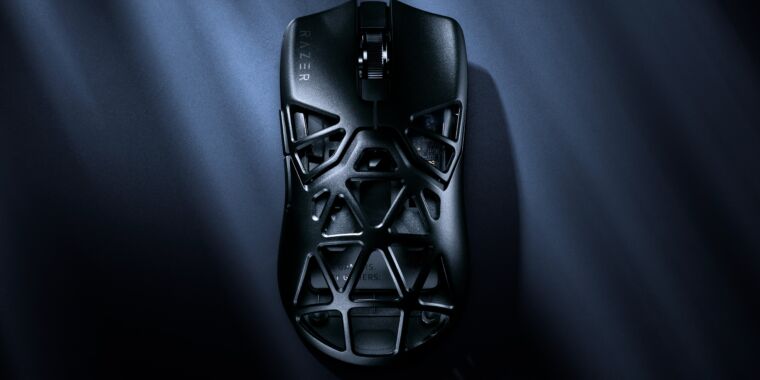Razer
There are a lot of cookie-cutter mice that, though made by different manufacturers, have the same shapes and features but rely on mild changes in color or sensor specs to differentiate themselves. So when Razer announced the Viper Mini Signature Edition (SE) today, a wireless mouse that looks like it forgot to get dressed, we took notice.
The Viper Mini SE uses a magnesium alloy chassis “exoskeleton,” as Razer describes it. Lines of dark gray stretch across the mouse’s palm area, creating a web-like design and bold, gaping holes. Razer’s using an extreme take on the honeycomb design, which has holes drilled into a mouse’s chassis to reduce weight. However, the typical honeycomb mouse, like the Glorious Model I, has many more holes that are smaller, while the Viper Mini SE has holes that are so big, it looks like you could poke your finger through them.

Razer
At first look, I was immediately concerned about the mouse’s durability. Despite what Razer claims, I still think I’m more likely to break a mouse with 18 holes in it than one with none. Large openings can also attract dust and debris, but bigger holes should make the mouse easier to clean with an air blower than a honeycomb mouse topped with more, smaller openings.
Razer graciously gives the mouse a three-year warranty, which is one year longer than it usually gives mice. We’ll be keen to check out reviews and long-term experiences with the Viper Mini SE to see how it fares, especially among power users, like gamers, who tend to use their mice aggressively.
From a glass-half-full perspective, the cavernous mouse could have the benefit of helping the hand on top of it stay cool. With less contact between the user’s hand and the electronics, plus more airflow, users may find their hands clamming up less easily during long hours of intense use. Razer didn’t go so far as to install a cooling fan in the mouse like Marsback’s Zephyr, though.
Big holes help make the Viper Mini SE Razer’s lightest mouse. It’s 1.73 ounces, which is about 30 percent lighter than the Viper Mini (2.15 ounces) with the same form factor and nearly identical dimensions. It’s still not the lightest mouse around, however. For example, Cooler Master’s MM720 is also 0.11 pounds, and Finalmouse has sold mice weighing as little as 1.48 ounces.
With the weight savings gained, it would have been nice if Razer added buttons to the mouse’s right side so it could be truly ambidextrous, like the Razer Viper Ultimate.

Razer
Razer used magnesium alloy for the mouse because it had the preferred “strength-to-weight ratio.” Plastic, it said, was less sturdy with drilled holes and had minimal weight reduction comparatively. And titanium, while lightweight, stronger, and sturdier, had fabrication limitations. Finally, fabrication limits, plus a heavier weight than plastic, precluded Razer from making the Viper Mini SE with carbon fiber.
According to Razer’s press release, the mouse is made “with an injection-molded exoskeleton that is then CNC machined and polished. The exoskeleton shell then undergoes passivation to reduce any susceptibility to corrosion, after which it is painted and assembled. At each step, each unit is meticulously inspected…”
The Razer Viper Mini SE targets gamers seeking a mouse that’s as easy as possible to flick around their desk. But a featherweight mouse with a high dots-per-inch (DPI) spec (up to 30,000 DPI in the Viper Mini SE’s case) can also appeal to users of increasingly high-resolution monitors and multi-screen setups or those who find their arm or hand getting tired while mousing.
If you’re looking for a lot of chassis for your buck, this isn’t it. The wireless peripheral will cost a whopping $280 when it debuts on February 11.
Ars Technica may earn compensation for sales from links on this post through affiliate programs.

